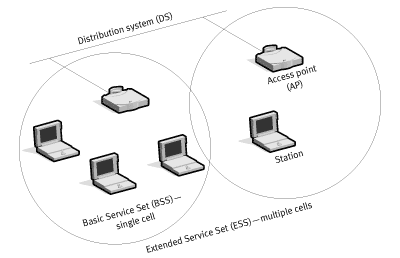LTE筆記: 5G New Radio (NR) ~3: 對於定位的要求
雖然NR的架構尚未決定,
但是對於定位的規範已經開始討論,
在3gpp文件RP-161576中, Intel負責整理了NR對定位的需求,
我們列點如下, 並取重要的內容說明:
The NR should enable, and improve if suitable, state-of-art positioning techniques, such as RAN-embedded (Cell-Id, E-CellID, OTDOA, UTDOA, etc.) and RAN-external (GNSS, Bluetooth, WiFi, terrestrial beacons, sensors, etc).
The NR positioning shall exploit high bandwidth, massive antenna systems, network architecture/ functionalities (e.g. heterogeneous networks, MBMS) and deployment of massive number of devices.
* MBMS: Multimedia Broadcast/Mukicast Service
Additional NR positioning requirements include:
1. Support for different accuracy levels, latency levels and device categories
2. Support [1m] horizontal and vertical accuracy in [90%] of occasions
3. Reduced network complexity
3. Reduced device cost
4. Reduced device power consumption
5. Efficient signalling over the air interface and in the network
6. Support for hybrid positioning methods
7. Scalability (support for large number of devices)
8. High security
9. High availability
10. UE speed of [250] km/h
但是對於定位的規範已經開始討論,
在3gpp文件RP-161576中, Intel負責整理了NR對定位的需求,
我們列點如下, 並取重要的內容說明:
The NR should enable, and improve if suitable, state-of-art positioning techniques, such as RAN-embedded (Cell-Id, E-CellID, OTDOA, UTDOA, etc.) and RAN-external (GNSS, Bluetooth, WiFi, terrestrial beacons, sensors, etc).
The NR positioning shall exploit high bandwidth, massive antenna systems, network architecture/ functionalities (e.g. heterogeneous networks, MBMS) and deployment of massive number of devices.
* MBMS: Multimedia Broadcast/Mukicast Service
Additional NR positioning requirements include:
1. Support for different accuracy levels, latency levels and device categories
2. Support [1m] horizontal and vertical accuracy in [90%] of occasions
3. Reduced network complexity
3. Reduced device cost
4. Reduced device power consumption
5. Efficient signalling over the air interface and in the network
6. Support for hybrid positioning methods
7. Scalability (support for large number of devices)
8. High security
9. High availability
10. UE speed of [250] km/h
這裡列出的需求, 有點太過廣泛而虛無,
大致上, 我們可以看做兩方面的要求:
第一, 在網路架構部分,
必須同時考慮既有的LTE定位架構 (RAN-embedded),
以及其他網路輔助定位的可能性 (RAN-external),
在部分, 在R13, R14的修改中, 已經加入, 可以參考之前的文章,
此外, 由於NR本身即為一個多模的通訊架構, 支援廣泛的頻譜範圍與通訊方式,
在設計NR時, 也希望可以考慮在多模下的定位架構,
並希望能夠減低: 網路複雜度, 手機功耗, 裝置成本,
並找出更有效的控制訊號傳送方式,
同時提供高可靠性, 高安全性, 並能夠同時支援大量裝置進行定位,
第二, 更為重要的, 是定位的目標與參數,
在這一部分希望90%的定位誤差小於1公尺,
此定位誤差包含室內和室外的使用情境,
並同時規範水平 (平面圖上的位置), 以及垂直 (在哪一個樓層?) 的誤差,
更進一步的, 此份需求也提及了使用者的移動性,
在設計中, 是以250 km/hr作為參考, 換句話說, 是每秒70公尺的速度,
以上的規格, 就我所知, 應該很難以單一定位網路完成,
因此, NR應該寄望於能夠藉由結合不同的定位服務,
並且根據不同的應用情境切換來到達這樣的定位精確度,
不過, 目前看起來還有一段長路要走...
對於這些標準有興趣的可以看另一份文件RP-161575,
這份文件, 是各廠商討論定位標準的回覆信函整理,
這裡可以看到更詳細的討論, 以及各廠商的想法,



留言
張貼留言